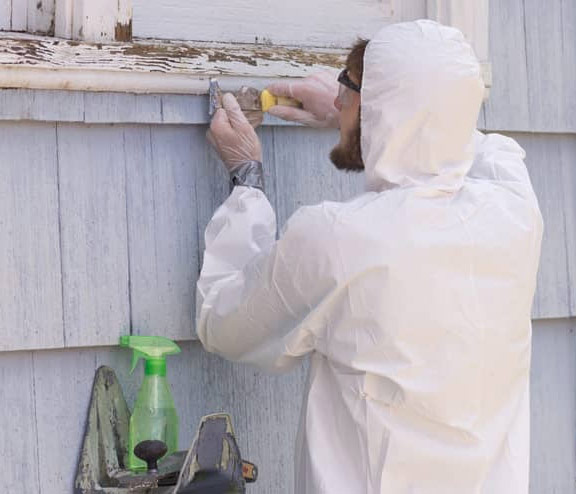NYC Lead Removal Contractors-- Obtain Safe and Reliable Providers
NYC Lead Removal Contractors-- Obtain Safe and Reliable Providers
Blog Article
Essential Devices and Approaches for Reliable Lead Offense Cleaning
Dealing with lead offenses effectively requires a comprehensive method that mixes the right devices with calculated methodologies. Concurrently, the usage of specialized cleaning tools, such as HEPA vacuums and lead-specific cleansing representatives, is critical for complete pollutant elimination. Efficient containment methods, consisting of plastic bed linen and negative air pressure systems, are necessary to prevent the spread of hazardous products.
Individual Safety Tools
Individual protective equipment (PPE) is a vital element in the effective management of lead contamination cleanup. The vital PPE for lead clean-up includes respirators, protective apparel, handwear covers, and eye security.
Respirators, especially those furnished with HEPA filters, are crucial for filtering system airborne lead particles, preventing breathing. Appropriate fit and seal checks are important to ensure their performance. Safety apparel, consisting of coveralls and disposable matches, prevents lead dust from adhering to workers' garments, lowering the threat of additional contamination. Gloves, commonly made from nitrile or latex, secure the skin from direct contact with lead, while safety and security goggles or full-face shields protect the eyes from dirt and particles.
Furthermore, strenuous training on the appropriate use and maintenance of PPE is crucial. Workers need to be educated on putting on and doffing procedures to prevent contamination. Normal inspections and substitutes of PPE components are essential to keep their protective abilities, making sure a safe and certified cleaning operation.
Specialized Clean-up Devices

Another vital device is the wet/dry vacuum cleaner, which can efficiently clean up both dust and fluid impurities. These vacuums typically feature HEPA filters to provide an extra layer of safety and security. Wet wipes or tack fabrics are likewise crucial for surface cleaning; they are specifically designed to capture and hold lead bits, lowering the threat of spreading out contamination.
For more stubborn deposits, specialized lead-removal cleansing representatives are required. These agents are formulated to damage down lead particles, making them simpler to eliminate. Scrub brushes with strong bristles can assist in this procedure, particularly on harsh surface areas where lead dirt often tends to stick extra highly.
In addition, encapsulants are utilized to seal lead-contaminated surfaces, avoiding the release of lead dust. These specialized paints and finishings are created to follow various substrates, providing a long-term solution for lead containment.
Reliable Control Techniques
Effective containment techniques are vital in alleviating the spread of lead contamination during cleanup activities. Implementing robust containment approaches makes sure that lead bits do not migrate to unaffected locations, go to my blog consequently securing both workers and the setting. One key technique is using plastic bed linen to secure off polluted zones. Sturdy polyethylene barriers can be installed from floor to ceiling to develop a regulated workspace, significantly reducing the threat of air-borne lead dust dispersal.

To enhance control, encapsulants can be related to surface areas that are not being removed or interrupted. These specialized finishes bind lead dust, minimizing its availability for resuspension. In addition, all employees should put on suitable Individual Protective Tools (PPE), including respirators and non reusable suits, to stop contamination spread.
Safe Disposal Practices
Making sure secure disposal methods is a critical component in the management of lead contamination cleaning. Proper disposal alleviates the threat of lead re-entering the setting and endangering public health and wellness. The primary step is to determine and set apart lead-contaminated waste from other materials. Safe control using durable, leak-proof containers is essential to avoid splilling throughout transportation.
Delivering lead waste requires adherence to strict guidelines. Utilizing accredited unsafe waste service providers makes view website sure that the materials are taken care of properly. Documents, consisting of shows up describing the kind and quantity of waste, need to come with deliveries to track the waste from the site of beginning to its final disposal location.
Designated contaminated materials disposal centers are outfitted to manage lead-contaminated products safely. These facilities frequently use sophisticated techniques such as stablizing, solidification, or chemical therapy to neutralize the lead prior to disposal. Landfilling in specialized, lined locations that prevent leachate from polluting groundwater is a common method for last disposal.
Routine training for workers associated with lead waste disposal is vital to preserve security standards and prevent accidental direct exposure. By adhering to these practices, organizations can substantially decrease the environmental and wellness influences linked with lead contamination.
Regulatory Compliance Tips

Sticking to regulatory compliance is vital in the successful implementation of lead contamination cleaning. Comprehending and following federal, state, and neighborhood regulations makes sure not just the safety and security and health of people but additionally the lawful and economic health of the clean-up company. The Epa (EPA) sets strict requirements, such as the Lead Restoration, Fixing, and Painting (RRP) Guideline, which mandates appropriate accreditation and training for specialists handling lead-based activities.
Conformity begins with a thorough assessment of applicable legislations and policies. Organizations needs to stay updated on any legal modifications, which can be facilitated through regular training sessions and signing up for market updates. Documentation is an additional critical compliance facet; keeping thorough records of all activities, including assessment records, worker training logs, and disposal shows up, is essential.
Additionally, engaging with certified lead inspectors or run the risk of assessors guarantees that lead risks are properly identified and alleviated. Employers must implement making use of Individual Protective Devices (PPE) and guarantee that security procedures are strictly complied with. Lastly, clear communication with stakeholders, consisting of employees, clients, and regulatory bodies, will certainly promote a society of compliance and accountability, inevitably adding to a more secure and a lot more effective lead cleaning procedure.
Final Thought
Efficient lead violation cleaning requires the assimilation of specialized tools and calculated methodologies to ensure safety and efficacy. Individual protective devices (PPE) safeguards workers from direct exposure, while secure disposal techniques and strict adherence to governing compliance are essential for properly managing dangerous waste.
Report this page